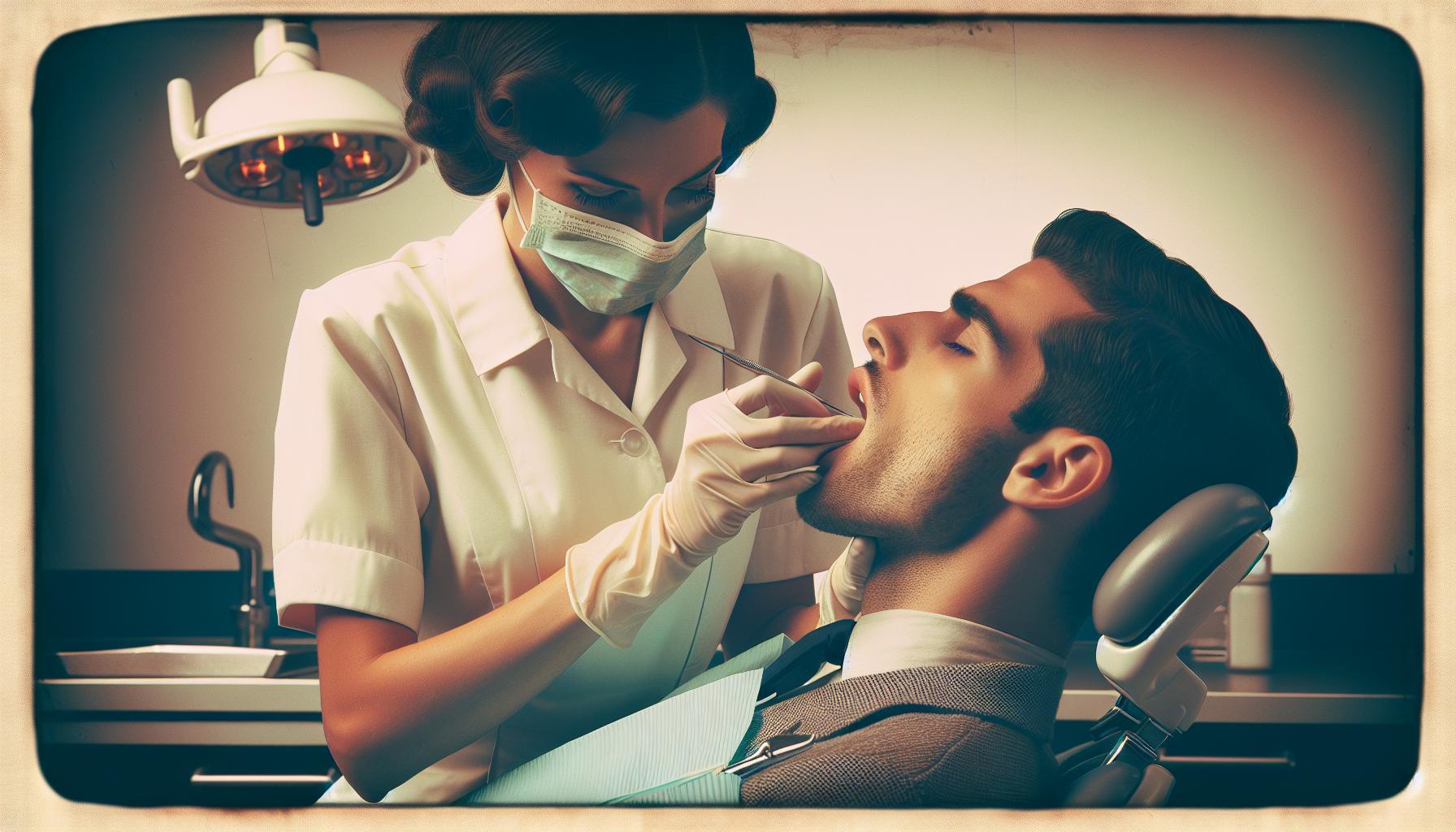Dental emergencies can strike unexpectedly, leaving individuals in pain and uncertainty. Understanding what constitutes a dental emergency is crucial for prompt treatment and relief. This article delves into common scenarios that require immediate attention, helping readers recognise when to seek help and ensuring they maintain their oral health.
What Is A Dental Emergency
A dental emergency refers to situations requiring immediate attention from a dental professional. Conditions causing severe pain, excessive bleeding, or risking long-term health typically qualify as emergencies.
Common examples include:
- Severe Toothache: Intense pain that does not subside often signals infection or dental abscess.
- Broken Tooth: Fractured or cracked teeth from injury necessitate quick assessment to prevent further damage.
- Knocked-Out Tooth: Immediate action is crucial, as timely reattachment can preserve the tooth.
- Loose or Dislodged Fillings: Lost dental work can expose the tooth to infection or additional harm.
- Gum Bleeding: Persistent bleeding after injury or spontaneously may indicate periodontal issues.
If you experience any of these symptoms, seeking urgent care from Emergency Dentist Perth ensures that you receive prompt and professional treatment, preventing complications.
Common Types Of Dental Emergencies

Dental emergencies encompass several situations requiring urgent care. Understanding these common types facilitates swift action when complications arise.
Severe Toothache
Severe toothache frequently results from infections, decay, or underlying dental issues. It typically presents as intense pain that may radiate to the jaw or ear. Swelling or sensitivity to temperature may accompany the discomfort. Immediate consultation with a dentist addresses the underlying cause and alleviates pain.
Knocked-Out Tooth
A knocked-out tooth requires rapid response to increase the chance of successful reattachment. In this instance, the individual must handle the tooth by the crown, avoiding contact with the root. Rinsing the tooth gently with water is crucial to remove debris. Placing the tooth in a glass of milk or the individual’s saliva can help preserve it until reaching a dental professional.
Broken Tooth
A broken tooth poses both aesthetic and functional concerns. The break can result from trauma, biting hard foods, or decay. Symptoms may include pain, sensitivity, or visible fractures. Prompt dental care is essential, as treatment options may include bonding, crowns, or root canal therapy, depending on the severity of the damage.
When To Seek Emergency Dental Care
Emergency dental care is crucial when experiencing certain symptoms or events affecting oral health. Timely intervention can prevent further complications and alleviate pain.
Recognising Urgent Symptoms
Urgent symptoms indicating a dental emergency include:
- Severe Toothache: Intense pain that doesn’t subside, often linked to infection or decay, can signal a serious issue.
- Bleeding: Excessive bleeding, particularly from the gums or following an injury, requires immediate attention.
- Knocked-out Tooth: If a tooth gets avulsed, quick action is vital to maximise the chance of successful re-implantation.
- Fractured Tooth: A broken tooth exposes sensitive tissue and can lead to infections if untreated.
- Swelling: Significant swelling in gums or face may indicate abscesses or infections needing prompt care.
- Loosening of Teeth: Movement in teeth not caused by normal wear suggests underlying problems that necessitate dental evaluation.
Timing And Response
Timing impacts the effectiveness of emergency dental care. The following guidelines apply:
- Immediate Care: For situations involving knocked-out teeth, seek dental assistance within 30 minutes to increase the likelihood of recovery.
- Same-Day Appointments: Prioritise a visit to the dentist within the same day for severe toothaches or fractures to prevent deterioration.
- Emergency Services: Utilise emergency dental services for life-threatening situations, such as severe facial swelling or trauma involving the jaw.
- After-Hours Availability: Many dentists offer after-hours services for urgent matters; contacting them directly can facilitate needed care.
Recognising urgent symptoms and responding quickly ensures optimal oral health and reduces the risk of complications.
Preventing Dental Emergencies
Preventing dental emergencies requires ongoing attention to oral health and safety practices. Consistent efforts in routine care and mindful habits contribute significantly to reducing the risk of urgent situations.
Routine Dental Care
Routine dental care involves regular check-ups and cleanings, typically every six months. These visits enable early detection of potential issues such as cavities, gum disease, or misalignment. Professional cleanings remove plaque and tartar, preventing decay and ensuring optimal oral health. Home care, including brushing twice daily and flossing at least once, helps maintain cleanliness and reduces the risk of emergencies. Fitting dental sealants on molars also protects against decay, especially in children.
Safety Tips
Safety tips play a crucial role in preventing dental injuries. Individuals should avoid using teeth for tasks such as opening packages or biting nails. Chewing on hard foods like ice or hard candy can lead to chips or fractures. Wearing mouthguards during sports protects teeth from trauma, especially in high-impact activities. Inadequate protection can result in knocked-out or broken teeth, requiring immediate dental attention. Additionally, maintaining a balanced diet and limiting sugary snacks helps prevent cavities, further reducing the likelihood of dental emergencies.
Conclusion
Recognising a dental emergency is vital for maintaining oral health. Immediate attention can prevent severe pain and long-term complications. When faced with urgent symptoms like severe toothache or a knocked-out tooth, seeking professional help promptly is essential.
Preventive measures play a crucial role in minimising the risk of dental emergencies. Regular dental check-ups and good home care practices can help identify potential issues before they escalate. By prioritising oral health and safety, individuals can safeguard their smiles and overall well-being.
Frequently Asked Questions
What is a dental emergency?
A dental emergency is a situation that requires immediate attention from a dental professional. It typically involves severe pain, excessive bleeding, or situations posing risks to long-term health, such as knocked-out teeth or severe toothaches.
When should I seek emergency dental care?
You should seek emergency dental care if you experience severe toothache, excessive bleeding, a knocked-out tooth, or significant swelling. Prompt attention can prevent further complications and alleviate severe pain.
How do I handle a knocked-out tooth?
If a tooth is knocked out, handle it gently by the crown, not the root. Rinse it lightly with water, and if possible, place it back into the socket. If that’s not possible, keep it in milk or saliva and get to a dentist immediately.
What are common signs of a dental emergency?
Common signs include severe toothache, excessive bleeding, loose or dislodged teeth, and significant swelling of the gums or face. If you experience these symptoms, it’s essential to seek help quickly.
How can I prevent dental emergencies?
Prevent dental emergencies by maintaining good oral hygiene, visiting your dentist regularly, and using mouthguards during sports. Avoid using your teeth for tasks they aren’t meant for and maintain a balanced diet to reduce cavity risk.
